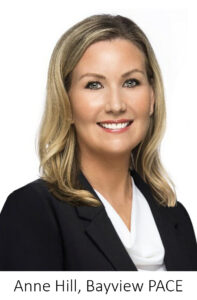
Five Key Trends Are Now Accelerating C-PACE Finance Adoption
Taking a market pulse, it’s clear 
C-PACE is a specialty public finance tool that involves no government funding, but uses a public finance mechanism enabling owners and developers to fund multimillion-dollar improvements such as basic facility infrastructure (HVAC, boilers, water systems, lighting systems, elevators, building envelopes) as well as advanced needs in resiliency and energy (structural seismic improvements, storm-flood-fire resilience, and more).
Most recent figures show C-PACE financings are now well over $4 billion nationally, according to PACENation, as more and more states and jurisdictions adopt C-PACE, including most recently Alaska, Hawaii, Massachusetts, Nevada, Tennessee and Washington state. Meanwhile, states with existing programs have made critical updates that significantly improve C-PACE’s attractiveness, such as Colorado, Connecticut, Michigan, Pennsylvania and Wisconsin. The CPACE Alliance tracks state-by-state updates that have made dozens of existing programs more comprehensive or more easily implemented.
What’s driving the boom that promises to make this year potentially the biggest ever for C-PACE?
In our work sponsoring C-PACE financing, hybrid C-PACE and traditional funding vehicles, Bayview PACE has been monitoring five key trends affecting U.S. commercial real estate owners and developers in both new and retrofit finance.
Rising interest rates have made C-PACE more than competitive.
Over the past nine months, rate increases for traditional construction financing have outpaced rate increases in the C-PACE market. With interest rates at their highest in years, and the uncertainty of Fed moves to raise, maintain or lower rates, borrowers are finding C-PACE to be very competitive to sources with similar attributes. Currently, C-PACE terms range in the mid to high single digits, which is on par with bank construction financing terms. Bank terms were previously often lower than C-PACE.
Traditional commercial property lenders have scaled back on construction loans, creating a void in the market.
The decline of bank lending in commercial property is driven in large part by lack of bank liquidity, the commercial real estate market softness, and property-related meltdowns at Silicon Valley Bank and other regionals. C-PACE is a privately financed program that has not been impacted as significantly by these external factors. In fact, there is an abundance of C-PACE financing currently available.
Roadblocks and lack of knowledge about C-PACE are disappearing.
PACENation and C-PACE Alliance have monitored the growing numbers of traditional lenders, debt funds and life companies that will approve of adding C-PACE where the lender has a first mortgage in place. The list has ballooned into the hundreds as institutions see that their clients need complementary solutions.
Demand is growing for bridge financing alternatives.
A relatively newer application of C-PACE is replacement of traditional bridge finance vehicles such as private mortgages, CMBS and high-cost debt. This goes for both in-development projects that are hitting cost overruns or are feeling the impact of floating-rate construction loans, as well as for recently financed or recently constructed projects. The use of C-PACE as “rescue capital” has boomed this year, and revived a number of commercial real estate developments that might normally have stalled or been canceled.
Strong fundamentals are driving borrowers to C-PACE, including its terms, flexibility and wide applications.
C-PACE funding is nonrecourse except for completion guarantees, it is pre-payable at any point over its typical 20- to 30-year term, and it can be used in all commercial real estate depending on local jurisdictions. Another reason C-PACE is gaining popularity is the look-back option available in many states, enabling C-PACE funding retroactively, often up to three years later.
Real estate development and investment properties utilizing C-PACE the past few months alone demonstrate the wide adaptability and application of this flexible financing option, such as condos and senior housing on the West Coast, apartments in Florida, office buildings in Baltimore-D.C., and hotel/hospitality and industrial projects in the Midwest.
C-PACE provides an optimal capital source for most every commercial real estate project. With program legislation currently enabled in 37 states, C-PACE is growing in popularity among real estate owners and with the financial institutions looking to serve them.
Anne Hill is Senior Vice President at Bayview Asset Management and Bayview PACE.
